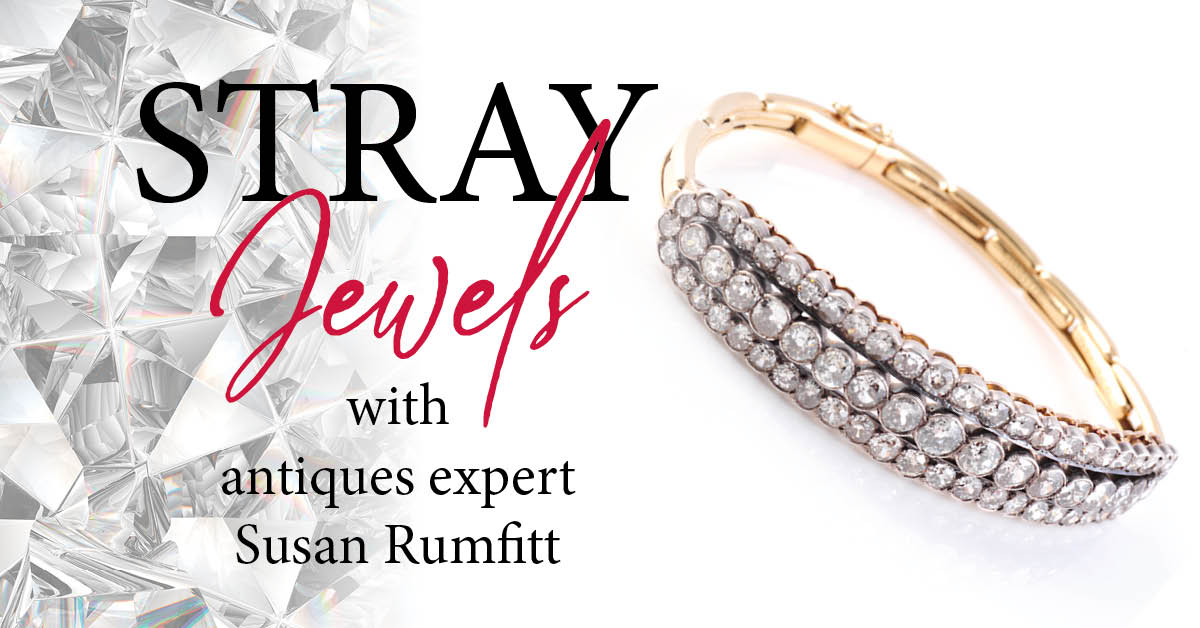
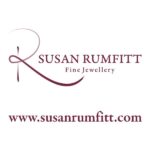 Stray Jewels is a monthly column written by BBC Antiques Roadshow jewellery specialist, Susan Rumfitt. Susan started her career working for Christie’s auctioneers in Glasgow before establishing her own jewellery department, The Gallery in Harrogate.
Stray Jewels is a monthly column written by BBC Antiques Roadshow jewellery specialist, Susan Rumfitt. Susan started her career working for Christie’s auctioneers in Glasgow before establishing her own jewellery department, The Gallery in Harrogate.
In 2006, she joined the Antiques Roadshow and has since built up an extensive knowledge of and passion for fine jewellery.
A New Year is always a good time to start a new pastime. So why not start to collect jewellery? From high quality costume jewellery to fabulous gems set jewellery, there is something in the jewellery world for all tastes and budgets. With an array of auction houses, antiques centres and jewellery shops around the region we really do have a wealth of choice and knowledge to help the collector.
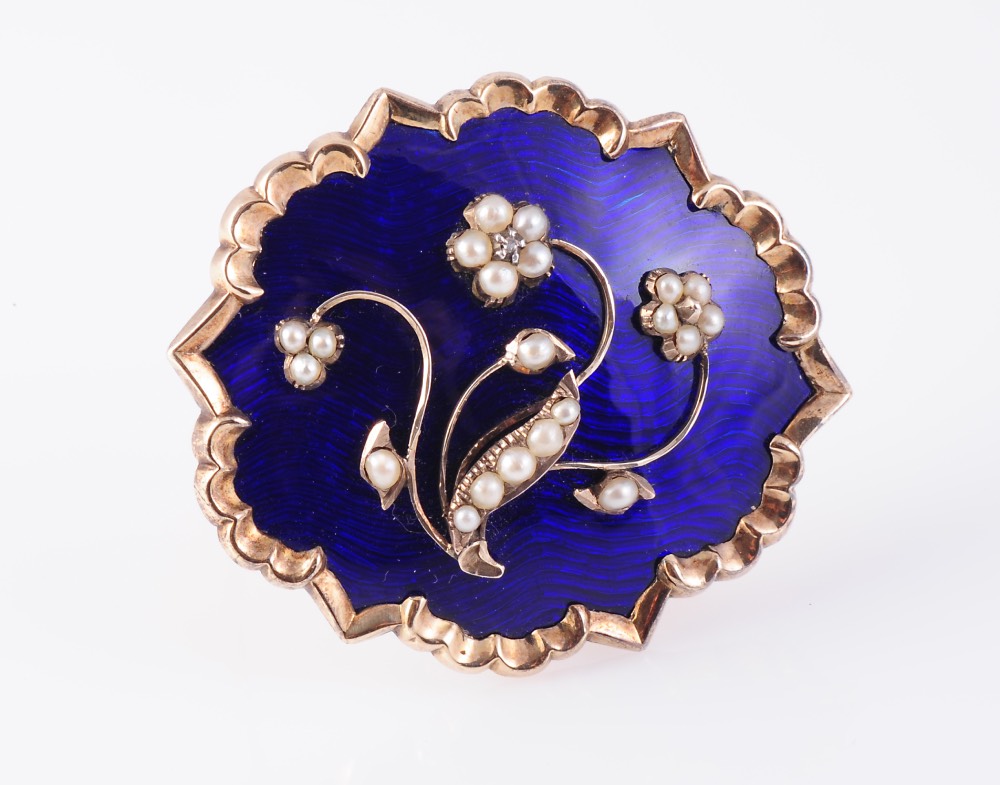
Victorian Enamel and Gold Forget-Me-Not brooch (circa 1870)
How do you begin to collect jewellery?
There are many ways to approach collecting jewellery. Perhaps collect a particular gemstone. Gemstones have so many origins and each origin can determine the colour and quality of the stones. It is great fun to see the array of tones of reds for rubies for example or seeing how aquamarines can range from pale blue – almost clear stones to a very intense blue. The colour can also help to determine the age of a piece of jewellery as only certain countries would have been mining stones at certain times in history.
Alternatively, your collection could be themed, by age, type of jewel or subject matter. You maybe particularly interested in the Georgian, Victorian or Art Deco periods for example, for which there are many beautiful jewels appearing at auctions and fairs to tempt you.
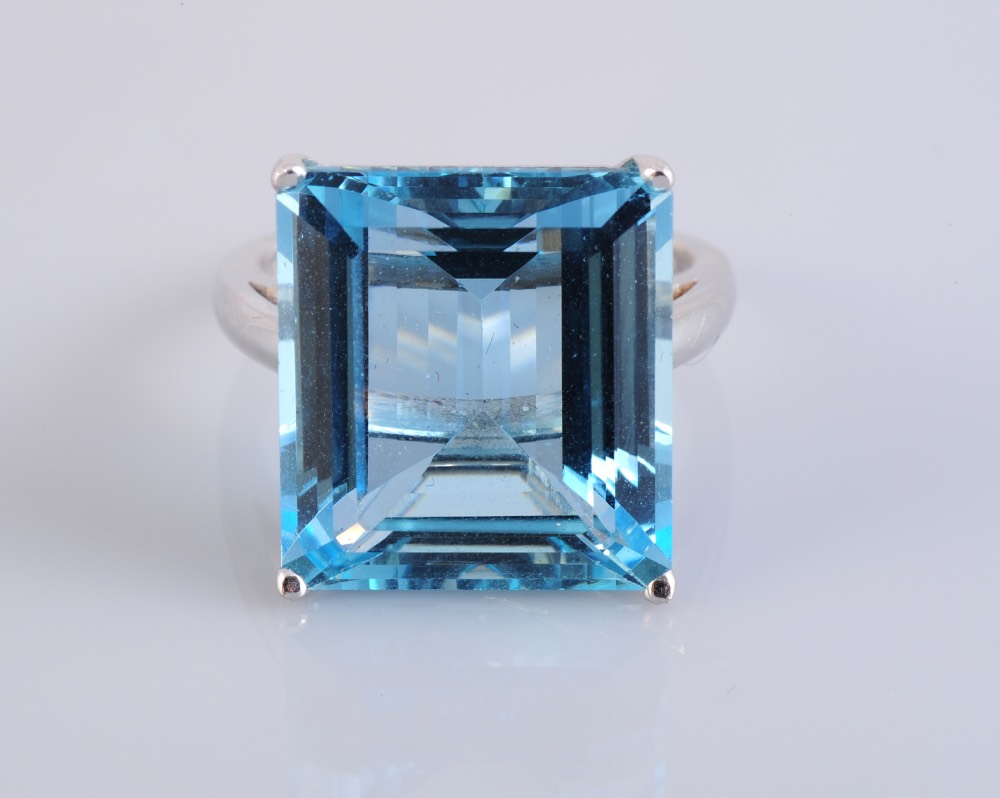
Art Deco Aquamarine Ring (circa 1930)
Another approach is to pick a certain designer of jewellery. As signed jewellery is becoming highly collectable, this can be a costly exercise! There is a certain excitement to be had hunting out these pieces. Prior to the 1970’s, jewellery made in Britain didn’t have to be signed or hallmarked. Identifying makers is quite often through knowing the style of a designer and spotting any characteristics in their work. Once you become familiar with a certain jewellery maker you may spot a piece of jewellery by them that has been overlooked by others – that can be quite a thrill.
Quality
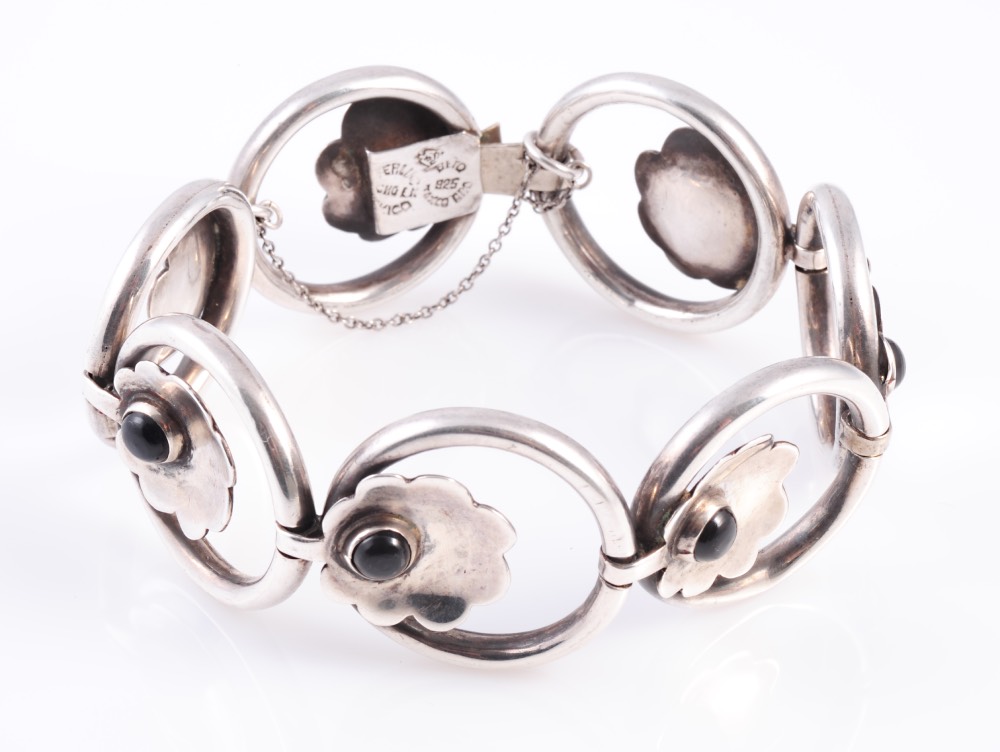
Onyx and silver bracelet (circa 1960)
Whatever your budget, always buy the best quality items that you can. This avoids having to spend money on restoration which can be a costly exercise. Knowing the piece is in good condition could help the piece to maintain value in the future.
Always ask for advice when viewing jewellery. Buying gemstones can be daunting. Colour, clarity, cut and carat weight (known as the Four Cs’) all add to the value of a stone. Invest in a jewellery loupe which will magnify the jewellery by at least 10 times, exposing flaws in the gemstones and any damage to the mounts.
Buying for Investment
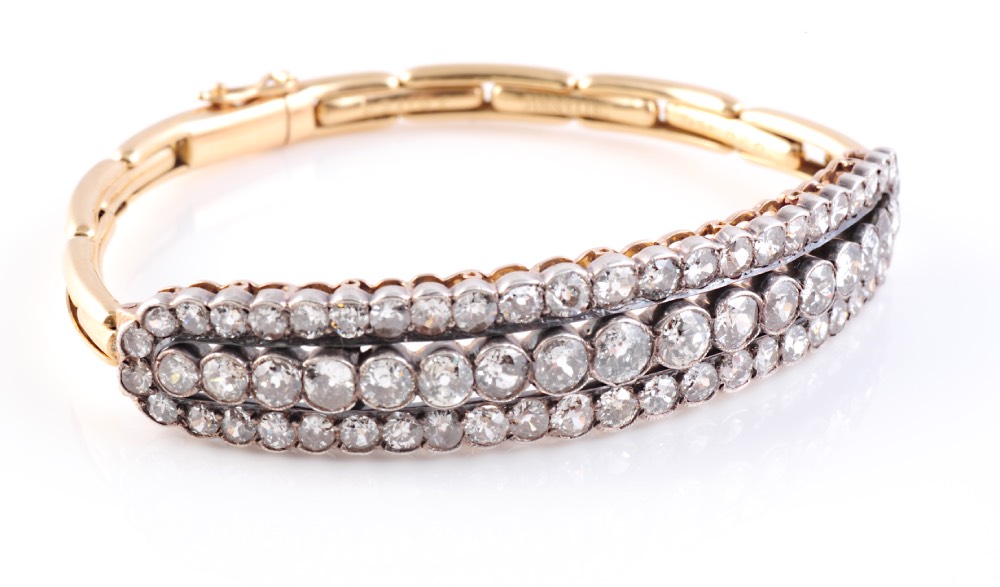
Victorian diamond bangle
No one can see into the future and the antiques market is as changeable as any. Clothing and interior decorating fashions come and go and this also applies to the jewellery market too. The best advice is to buy what you love and wear it, that way you have invested in an item of jewellery that makes you smile… and who knows, its value may soar in the future – an added bonus.
By collecting jewellery you are not only treating yourself but creating heirlooms for future generations.
Read More:
- Stray Jewels with Susan Rumfitt: Christmas sparkle
- Stray Jewels with Susan Rumfitt: Jewellery fit for royals

